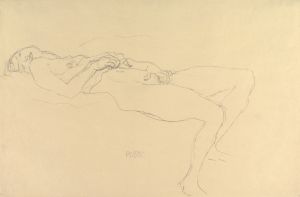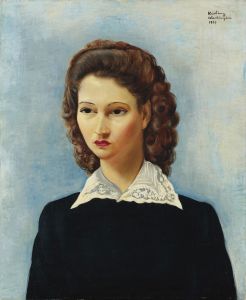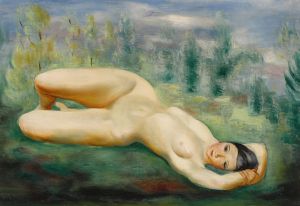
La naufragée
A hand-painted replica of Moïse Kisling’s masterpiece La naufragée, meticulously crafted by professional artists to capture the true essence of the original. Each piece is created with museum-quality canvas and rare mineral pigments, carefully painted by experienced artists with delicate brushstrokes and rich, layered colors to perfectly recreate the texture of the original artwork. Unlike machine-printed reproductions, this hand-painted version brings the painting to life, infused with the artist’s emotions and skill in every stroke. Whether for personal collection or home decoration, it instantly elevates the artistic atmosphere of any space.
Moïse Kisling was a Polish-born French painter known for his contributions to the School of Paris, a group of artists who lived and worked in the French capital during the early 20th century. Kisling was recognized for his distinctive style, which combined elements of modernism with a strong emphasis on color and form. Among his diverse body of work, "La naufragée" stands out as a notable piece, although specific details about this painting are relatively scarce.
"La naufragée," which translates to "The Shipwrecked Woman" in English, reflects Kisling's fascination with the human form and his ability to convey emotion through portraiture. Kisling often painted portraits and nudes, capturing the essence of his subjects with a unique blend of realism and stylization. His works are characterized by their vibrant color palettes, precise lines, and an almost sculptural quality to the figures.
Kisling was born in Kraków, Poland, in 1891 and moved to Paris in 1910, where he became part of the Montparnasse art scene. This area was a hub for artists, writers, and intellectuals, and Kisling quickly became associated with other prominent figures of the time, such as Amedeo Modigliani, with whom he shared a close friendship. The influence of his contemporaries, as well as the vibrant cultural environment of Paris, played a significant role in shaping his artistic style.
Throughout his career, Kisling's work was exhibited widely, and he gained a reputation for his portraits, which often depicted women with elongated forms and expressive features. His ability to capture the inner life of his subjects made his portraits particularly compelling. While "La naufragée" is not as widely discussed as some of his other works, it likely embodies these characteristics, showcasing Kisling's skill in rendering the human figure with both sensitivity and strength.
Kisling's work is often associated with the broader movements of Fauvism and Expressionism, although he maintained a distinct style that set him apart from his peers. His use of bold colors and dynamic compositions reflects the influence of these movements, yet his focus on the individual and their emotional state gives his work a unique personal touch.
During World War II, Kisling served in the French Foreign Legion, and after the war, he continued to paint until his death in 1953. His legacy is preserved through his contributions to modern art and his influence on subsequent generations of artists.
While detailed information about "La naufragée" itself is limited, it remains a part of Kisling's broader oeuvre, which continues to be celebrated for its emotional depth and artistic innovation. His works are held in various collections around the world, and he is remembered as a key figure in the School of Paris, contributing to the rich tapestry of 20th-century art.
















